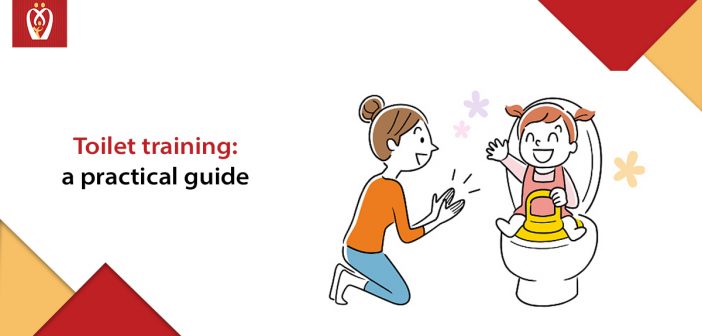Many parents aren’t sure when to begin potty training their children, which is also known as toilet training. You should keep an eye out for signs that your child is ready, such as pausing mid-activity or clutching his or her diaper because not all children are ready at the same age. When they are able to understand and articulate concepts related to potty training, the link between the urge to urinate and the act of going potty, keeping their diaper dry for at least two hours, then going to the bathroom, sitting on the toilet, and then get up, pulling down diapers or underpants, engaging in toilet training and underpants use, it means they are most probably ready to be toilet trained properly.
While most children begin to show these signs between 18 and 24 months of age, not all are ready at that point. Toilet training for boys typically begins later and lasts longer than toilet training for girls.
How long does it take to learn toilet training?
A toddler can’t learn to use the potty in one day. It usually takes 3 to 6 months, but some children may require more or less time. It takes longer to complete the process if you begin too soon. Staying dry at night is a skill that takes months or even years to master.
Types of Toilets
The following are the two most common types of potty option
- A potty chair for toddlers that can be emptied into the toilet on its own
- To help your child feel more secure, you can use a toddler-sized toilet seat that sits on top of the toilet seat. If you go with this method, be sure to purchase a stepping stool so that your child can comfortably reach the toilet seat and feel supported while doing their business.
Before learning to pee standing up, most boys learn to use the toilet while seated. A potty chair may be a better option for boys who are uncomfortable or even afraid of using the toilet while standing on a stool.
Every bathroom in your home might benefit from having a training potty or seat. It’s a good idea to keep a portable toilet in the trunk of your car just in case. When driving long distances, plan to stop every 1 to 2 hours and bring a potty seat with you. Otherwise, finding a restroom may take an excessive amount of time. All these steps are crucial when you are toilet training your child.
The most effective way to train a child to use the toilet
Toilet training can begin as soon as your child is old enough and ready to use the potty on his or her own. When it comes to toilet training, there isn’t a single right way to do it. Each method has pros and cons.
You can train your child to use the toilet in a variety of ways such as using an infant potty or a child-oriented potty training method.
Toilet training that is focused on the needs of the child
Using the toilet can be discussed and offered by parents, but you shouldn’t exert too much effort to get your child to use it. If you want to help your child learn how to use the toilet or behave like an adult, you should be on the lookout for your child’s natural interests and encourage him/her to follow them.
Diapers or pull-up training pants are often used until a child is going to the bathroom without using the diaper method.
Three days toilet training method
On the first day of this method, all of the diapers are discarded. After that, children are only required to wear a T-shirt and their big kid underwear for the duration of the event. Pre-potty training supplies should include plenty of underwear and liquids to encourage peeing.
Parents take their children to the bathroom and teach them to tell them when they have to go so that their new underwear doesn’t get wet.
Then there are the mishaps, which are unavoidable. The child should be scooped up and taken to the bathroom if they begin to have an accident.
This process continues, and you must remain calm, lavish your child with praise, and use accidents as a teaching opportunity about when to use the bathroom.
Potty training with the help of parents
There are numerous approaches to parent-led potty training, but all of them rely on parents (or other caregivers) to set a schedule or time intervals for when a child is allowed to use the toilet.
During the day, a child may be dragged to the bathroom and encouraged to use the toilet every two to three hours. You can also teach your kid to use the bathroom before and after every meal, in between activities and before going to bed.
In parent-led potty training, parents and caregivers should support a child’s request to use the toilet at other times of the day as well.
also read- 10 Components of Infant and Toddler Care
Infant potty training
Diapers may be completely eliminated in infant potty training methods. Avoid using disposable diapers as early as possible. Cloth diapers that let a baby feel when they are wet are preferred by parents when using diapers at night.
With the help of your baby’s signals, you can predict when your child will poop or pee without the use of diapers. Time, patterns (such as eating and sleeping), vocalisations, or trusting a parent’s intuition are all examples of signals
The parent rushes their child to the toilet to relieve themselves when they realise their child needs to go. When under pressure, many potty-trained kids have issues. Having a new sibling can cause accidents in children as young as two or three years old.
Nevertheless, if your child has been potty-trained and is still experiencing issues, consult your physician.
Consult your doctor if you have any concerns about potty training your child or if your child is older than 4 but has not yet learned to use the toilet.
With Nurturey, you can get all the help you need as a new parent. Visit nurturey.com to know more!







